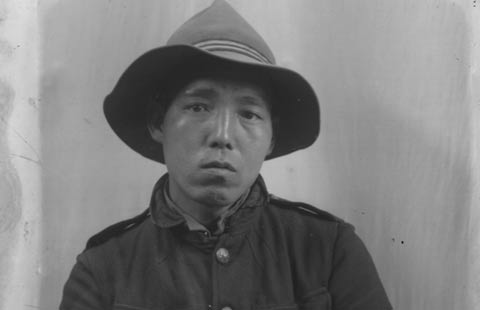The city that's all fired up about ceramics
By Peng Yining (chinadaily.com.cn) Updated: 2014-07-11 10:14
|
 |
| A craftsman carries half-finished porcelain at the ancient kiln museum in Jingdezhen, Jiangxi province. Photos by Zhang Hao / for China Daily |
|
First person | Hu Jiawang 'The Last Master' Hu Jiawang, 70, has been working with wood-burning kilns for more than 50 years. Students can gain a doctorate in 10 years, but it takes far longer to become an outstanding operator of the wood-burning kiln. I've been in this business since I was 13; I started by running errands for my master, and gradually became a master myself. People outside Jingdezhen have learned our technology, but they can't take our kilns away. Priceless masterpieces were made in those ancient kilns, masterpieces outsiders just can't replicate. By restoring and using the old kiln, we have preserved the old porcelain-making processes. The most difficult part is the firing, because the timing and temperature are crucial. Anyone who operates a wood-burning kiln is like a cook. Even with all the experience I've gained in the past 50 years, especially learning to "read" the flames, I sometimes still depend on my instincts. To show my respect for tradition, I take a bath and change my clothes every time we light the kiln, just as our ancestors did, and there is a bamboo chair in front of the kiln's mouth that only me, the chief operator, is allowed to use. Although the world has changed a lot, we will continue to work in the old ways in my kiln. Hu Jiawang spoke with Peng Yining. |
More than 100 pieces of porcelain enclosed in saggers - boxlike containers made from fire clay - were being fired in a 286-year-old wood kiln.
On the top of the kiln, a number of small eye-shaped openings allowed master kilnman Hu Jiawang to look into the structure and assess whether the porcelain was fired. When not in use, the "eyes" are covered with pieces of fire-resistant pottery to maintain a steady temperature by ensuring the heated air doesn't escape.
Hu spit into one of the "eyes" and watched the flames change color from red to white. "Almost done... almost," the 70-year-old said, his face glowing in the heat.
Built during the Qing Dynasty (1644-1911), the Zhenyao is the best-preserved ancient kiln in Jingdezhen, Jiangxi province. The structure, which is also known as the "Jingdezhen kiln" because of its strong links with the city, was restored by the local administration in 2009, and then put back into use.
When the kiln roared into life again, the city's age-old ceramics tradition was also rekindled by the renaissance of ancient pottery techniques.
As the fire crackled and the fragrance of burning pine filled the air, Hu said the flames would burn fiercely enough to reach every corner of the huge furnace, which can produce 10,000 kilograms of porcelain in one firing
Hailed as the world's largest wood-burning kiln by Guinness World Records, the 40-meter-long structure was in a state of advanced disrepair before the restoration work began; the surrounding wall had collapsed and the kiln's egg-shaped body was broken in several places.
"People switched to gas or electrical kilns," Hu said. "Even 30 years ago, people were warning their children to stay away from wood-burning kilns. They said the old ways of making ceramics were over and the wood kiln had no future - even worse, people said the traditional porcelain industry had no future."
- Kunming to join list of 72-hour visa-free cities
- China's top court to 'enrich'
green tribunals - Critics busy as giant toad floats into Beijing
- Latest round of anti-missile tests hits 'preset goal'
- Love story of a 86-year-old couple
- Eight stories you want to know about square dance
- Matmo wreaks havoc in Fujian, Taiwan
- Retired officials may expect tighter rules
- Beijing police teach bus drivers anti-terror tactics
- 229 provincial-level officials quit companies







